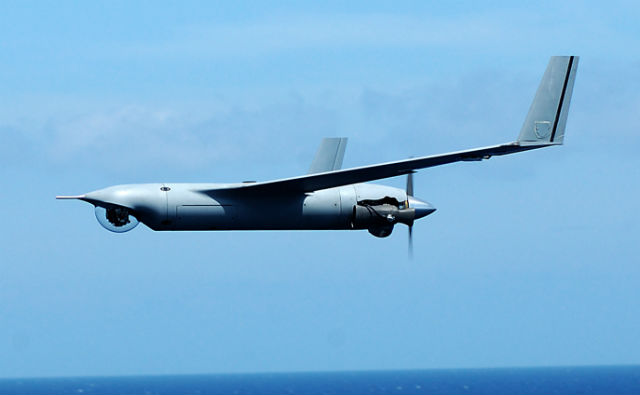The UK Royal Navy expects to conduct its first contractor-supported operations with the Boeing Insitu ScanEagle unmanned air system from late this year, although its timetable for the type's introduction has been affected by a lack of manpower.
Operations with the ScanEagle will occur under a contractor-owned and operated deal awarded to Boeing Defence UK earlier in June 2013 worth £30 million ($47 million). This will see the equipment launched from and recovered aboard some RN and Royal Fleet Auxiliary vessels.
Urgent operational requirement acquisitions such as the ScanEagle deal are routinely expected to see equipment enter use within six months of a contract award, but the RN process is likely to require at least nine months, says Lt Cdr Pete Whitehead, from the navy command.
Speaking at a pre-DSEi UAS conference in London on 9 September, Whitehead attributed the additional time requirement to the challenge of sourcing sufficient naval personnel to support the ScanEagle's introduction. This includes the service's need to have at least one person trained to fly the type, to serve as a safety officer.
 |
|---|
Insitu |
Around three RN staff will be required per ScanEagle detachment, with this having been reduced from an earlier objective of up to eight. "We simply can't find the people at the moment" to achieve the latter figure, Whitehead says.
While the contractor will be responsible for flying the UAS in support of RN operations, he notes: "Whoever is looking at the [camera] picture will be trained, and will be military."
While the UAS will be flown by a contractor-hired operator, the Ministry of Defence must issue a release to service clearance before ScanEagle operations can commence, as activities will be conducted from a military vessel.
"We expect the capability to start becoming available from the end of 2013 onwards," minister for defence equipment, support and technology Philip Dunne said on 5 September.
Source: Flight International























